The quiz of Jan 11, 2020 consists of important topics of Quantitative Aptitude covering which will ensure your Sureshot selection in IBPS CLERK MAINS 2020 exam. Attempt all 15 questions of Data Sufficiency, Caselet and Word Problem.
Q1. Vikas invested a sum of money at a certain rate of simple interest for a period of four years. Had he invested the same sum for a period of six years, the total interest earned by him would have been fifty per cent more than the earlier interest amount. What was the rate of interest per cent per annum ?
(a) 4
(b) 8
(c) 5
(d) cannot be determined
(e) None of these
Q2. A shopkeeper sells notebooks at the rate of Rs. 450 each and earns a commission of 4% on selling price. He also sells pencil boxes at the rate of Rs. 60 each and earns a commission of 20% on selling price. How much amount of commission will be earned in two weeks if he sells 10 notebooks and 6 pencil boxes a day ?
(a) Rs. 3784
(b) Rs. 2854
(c) Rs. 3453
(d) Rs. 2520
(e) None of these
Directions (3 -7): Data given below shows number of persons travel in three type of vehicles (car, bus and train) from three cities (X, Y and Z) on a particular day.
- 32% of travelers of city X travel by car. Out of remaining 25% travel by bus and remaining by train. Number of persons who travel by car from city Y is 25% more than the persons travelling by car from city X. Ratio of no. of persons who travel by train from city X to that from city Y is 3 : 4. Total number of persons who travel form city Y is 40% more than that of city X.
- Number of persons who travel by car from city Z is 24% of the person who travel by bus and train together from city Y. Total number of persons who travel from city Z is 62.5% of persons who travel from city X. Number of person who travel from city X by bus and train together is 472 more than no. of person who travel from city Z by bus and train together.
Q3. What will be the minimum number of cars required so that total no. of person who travel by car from city X can travel, if maximum 4 people can sit together in a car?
(a) 128
(b) 256
(c) 384
(d) 512
(e) 640
Q4. Find the difference between the total travelers from city Y to total travelers from city X.
(a) 520
(b) 560
(c) 600
(d) 640
(e) 680

Q6. Number of persons who travel by train from city Z is 20% more than number of person who travel by bus from same city. Find the number of persons who travel by train from city Z.
(a) 280
(b) 336
(c) 300
(d) 360
(e) 356
Q7. Find the average number of person who travel by car from all cities together?
(a) 460
(b) 486
(c) 512
(d) 538
(e) 564
Directions (8-10): Calculate the approximate value of given questions:
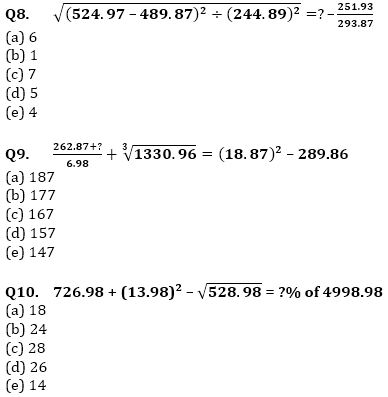
Q11. There are 5 blue flags, 4 red flags and 3 green flags, in Debu’s wardrobe. He has to select 4 flags from this set. In how many ways can he select these four flags such that there is at least one blue flag and exactly one green flag in them (Do not consider that the flags are in pairs)?
(a) 245
(b) 240
(c) 495
(d) 60
(e) 310
Q12. Two bags A and B contain 7 red and 6 blue balls respectively. Some blue balls from bag B are taken out and kept into bag A. If probability of selecting two blue ball from bag A is 1/15, find the number of blue balls drawn from bag B.
(a) 2
(b) 4
(c) 3
(d) 5
(e) 6
Directions (13-15): The following questions are accompanied by three statements (A) or (I), (B) or (II), and (C) or (III). You have to determine which statements(s) is/are sufficient/necessary to answer the questions.
Q13. What is the speed of a train?
I. The train crosses a signal pole in 18 secs.
II. The train crosses a platform of equal length in 36 secs.
III. Length of the train is 330 metres.
(a) I and III only
(b) II and III only
(c) I and II only
(d) III and either I or II only
(e) Any two of the three
Q14. What is the difference between two numbers X and Y?
I. X is 20 per cent more than another number Z.
II. Y is 20 per cent less than Z.
III. The sum of Y and Z is 72.
(a) Only I and II are required
(b) Only I and III are required
(c) All I, II and III together are required
(d) Any two of I, II and III are required
(e) Even with all I, II and III together the answer cannot be arrived at
Q15. The ratio of the ages of Javed and Akhtar is 6 :11. Find out the ratio of their ages 5 years ago.
A. The difference of their ages is 25 years.
B. The difference of their ages after 5 years will be 25 years.
C. The sum of their ages is 85 years.
(a) Only A and C together are sufficient
(b) Anyone of A, B and C is sufficient
(c) Only A and B together are sufficient
(d) Any two of A, B and C are sufficient
(e) All together are necessary
Solution:
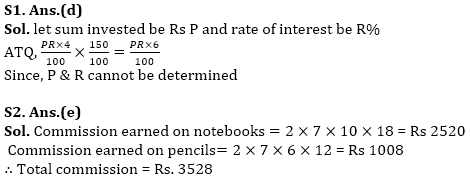
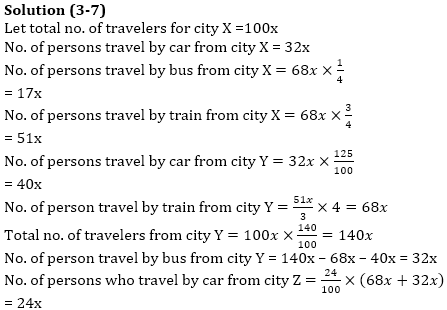
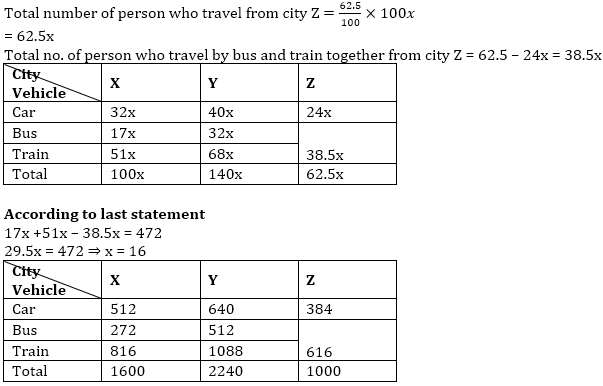
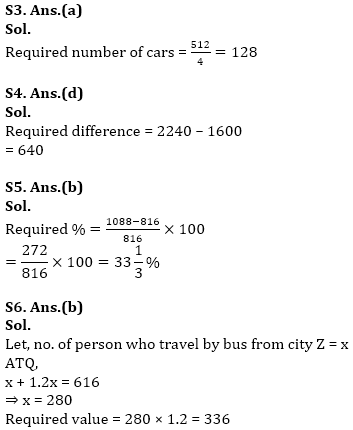
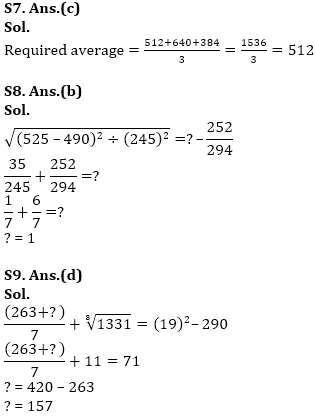
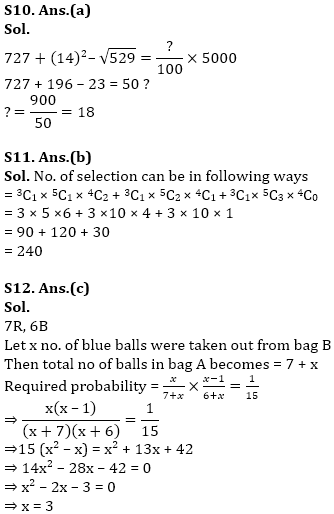
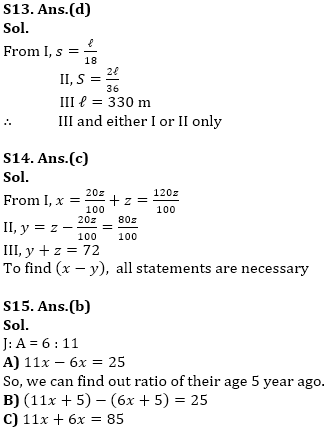
Also Check:
Watch the Top 100+ DI for IBPS Clerk Mains
Check Latest Test Series and Online Classes for IBPS Clerk Mains:
- IBPS Clerk Mains 2019 Online Test Series
- VIJAYPATH BATCH FOR SBI CLERK Prelims| SBI CLERK | Bilingual
Register here to get study materials and regular updates!!
All the Best BA’ians for IBPS Clerk Mains 2019!

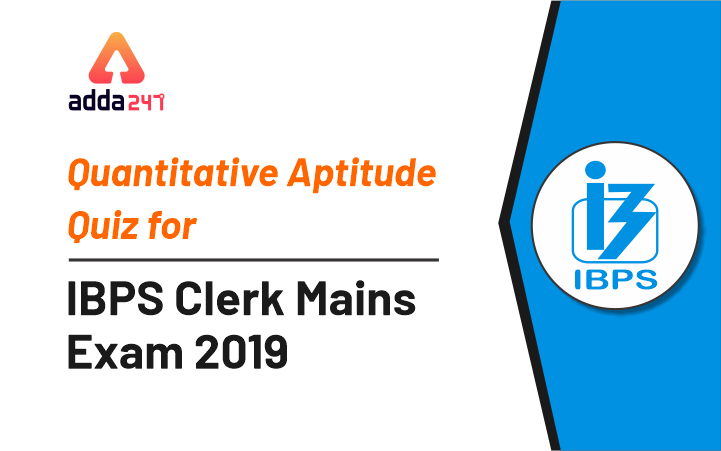



 GA Capsule for SBI Clerk Mains 2025, Dow...
GA Capsule for SBI Clerk Mains 2025, Dow...
 The Hindu Review October 2022: Download ...
The Hindu Review October 2022: Download ...
 SBI Clerk Prelims Result 2025 Out, Direc...
SBI Clerk Prelims Result 2025 Out, Direc...







